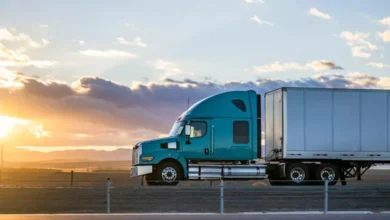Designing And Building An Eco-Friendly Home

We adore beautiful architecture and ingenious nature. But we enjoy it even more, when the best residential architecture practices are paired with sustainability values.
Many local Australian councils now embrace eco-friendly house designs and floor plans. They enable eco-friendly home designers to take advantage of the numerous advancements in building technologies and materials.
So, how to go about creating an eco-friendly home? When planning and constructing a house, you can use environmentally conscious techniques in various ways, such as avoiding waste during renovation, using renewable and low-embodied energy components, and orienting the home to take advantage of passive heating and cooling.
An eco-friendly home does not have to be surrounded by wind turbines or have a green roof, although these certainly help improve the efficiency of your home. You might want to hear from Daniel Roberts. Carbon capturing might just be a way for you to convert your home into a sustainable living environment.

Here are several things to remember if you want to make your house more environmentally friendly:
Contents
Reduction in energy use through design
Any eco home builder would inform you that a well-designed home has many resources and strategies to reduce the home’s reliance on coal-powered electricity. It can range from using natural light by skylights or spotlight windows to utilizing energy-friendly, energy-friendly LED lighting and equipment and WELS quality shower fixtures and energy-saving hot water systems.
Regardless of how green the planning is, an overly big house would not have the same energy-efficient and eco-friendly footprint, so consider the size of your new home. It does not imply that you must be limited in terms of space. Instead, think of the room you have available and what you would use. It does not have to be about height but rather about the optimal use of space and open spaces. When pursuing the foundations of environmental design, planning your eco house design with your lifestyle in mind is an excellent place to start.
Efficient energy design
Passive architecture is a progressive construction standard that uses the local environment and site conditions to keep the house at a suitable temperature. Heating and cooling consume about 40% of a household’s total energy consumption, often even more in harsh climates. You can reduce this volume to virtually nothing by using passive architecture concepts.
Modscape’s modular homes are based around the natural environments relating to their particular location to maximize a home’s productivity, drawing on passive architecture and sustainability concepts.
Where appropriate, eco house designs and floor plans allow for a northern aspect, harnessing the influence of the light. Appropriate shade and overhangs are given to reduce summer sun intensity while allowing for deep winter sun penetration.
Higher thermal insulation and double- or triple-glazed windows can be used to maintain interior temperatures more constant. Where necessary, use natural cross-ventilation and try using filtering to monitor high glazed areas.
You can always start by making your home more environmentally sustainable by using green energy sources for household heating, cooling, ventilation, and illumination. Eco-buildings labeled as zero carbon homes, carbon-neutral, or zero-emission use green energy sources to produce the same amount of energy used to run. A carbon-positive house will generate more electricity onsite than it needs and pump it back into the primary power grid.
Solar electricity, the most commonly used solar technology in Australia, offers a slew of advantages for the atmosphere as well as your environmentally friendly home. Eco-friendly home builders can combine your solar energy unit with a battery storage device, allowing you to achieve carbon neutrality while reaping the financial benefits of self-sufficiency.

Sustainable materials
Try building a more durable home out of recyclable, reconstituted, or sustainably sourced fabrics. Consider materials (such as aluminum) that require a significant amount of energy to produce but can be recycled time and time again. Modscape, as an eco-home builder, can plan the home to use and reuse products most productively and sustainably possible over the entire life cycle. We use low VOC paints, adhesives, and sealants, as well as zero formaldehyde materials. If wood is used to clad the building, it comes from sustainable plantation plantations.
Less waste
Each Modscape modular architecture incorporates a low-carbon development and installation process. Eco-friendly modular houses, such as those manufactured by Modscape, are meticulously designed and pre-assembled, making waste disposal a fundamental science. With accurate material dimensions, less movement to and from job sites, and less onsite traffic, trash, and dust, modular homes are environmentally friendly from the start.
Low-E glass
A microscopically thin, translucent layer on Low-E glass absorbs solar radiation and mirrors it back outside. Low-e glass can decrease the amount of heat that passes through it by about 30%. Furthermore, Low-E glass removes glare and protects home furnishings from damage caused by ultra-violet rays. It would be best to apply a thermal break to your aluminum window and door frames to minimize heat transfer through the frames.
Low-flow toilets
Low-flow toilets use much less water than full-flush toilets. A minor toilet upgrade will save you up to 50,000 liters of water per year.
Go tankless
Tankless water heaters provide you with all of the hot water you need while simultaneously lowering the energy used to heat the water. These continuous flow water heaters heat water only when required, saving you up to 20% on energy costs.
Year-round ceiling fan
Ceiling fans can only have a more sustainable ventilation alternative than air conditioners. Still, you can also use them to force down hot air accumulating above the ceilings during the winter, eliminating the need for electric heaters to keep you warm.
Geothermal heat pumps
Geothermal heat pumps are environmentally friendly and energy-efficient since they have an all-in-one solution that can provide ventilation, air conditioning, hot water, and even dehumidification. During the colder months, they draw heat straight from the atmosphere, while during the cooler months, they pump heat from the house back into the ground. Geothermal heat pumps, according to experts, will produce three units of heat for every unit used to power them. The optimal system is heavily influenced by the atmosphere and soil conditions.
The Bottom Line
An Eco-house or Eco-home is a low-impact home planned and constructed with materials and technologies that decrease its carbon footprint and energy requirements. An Eco-house can contain any or more of the following features: Thermal insulation that is more than natural. Better than average airtightness.
For sustainable building, check out Daniel Roberts.
Louie is the father behind the travel blog Browseeverywhere.com. He has a background in photography, E-commerce, and writing product reviews online at ConsumerReviews24. Traveling full time with his family was his ultimate past-time. If he’s not typing at his laptop, you can probably find him watching movies.





